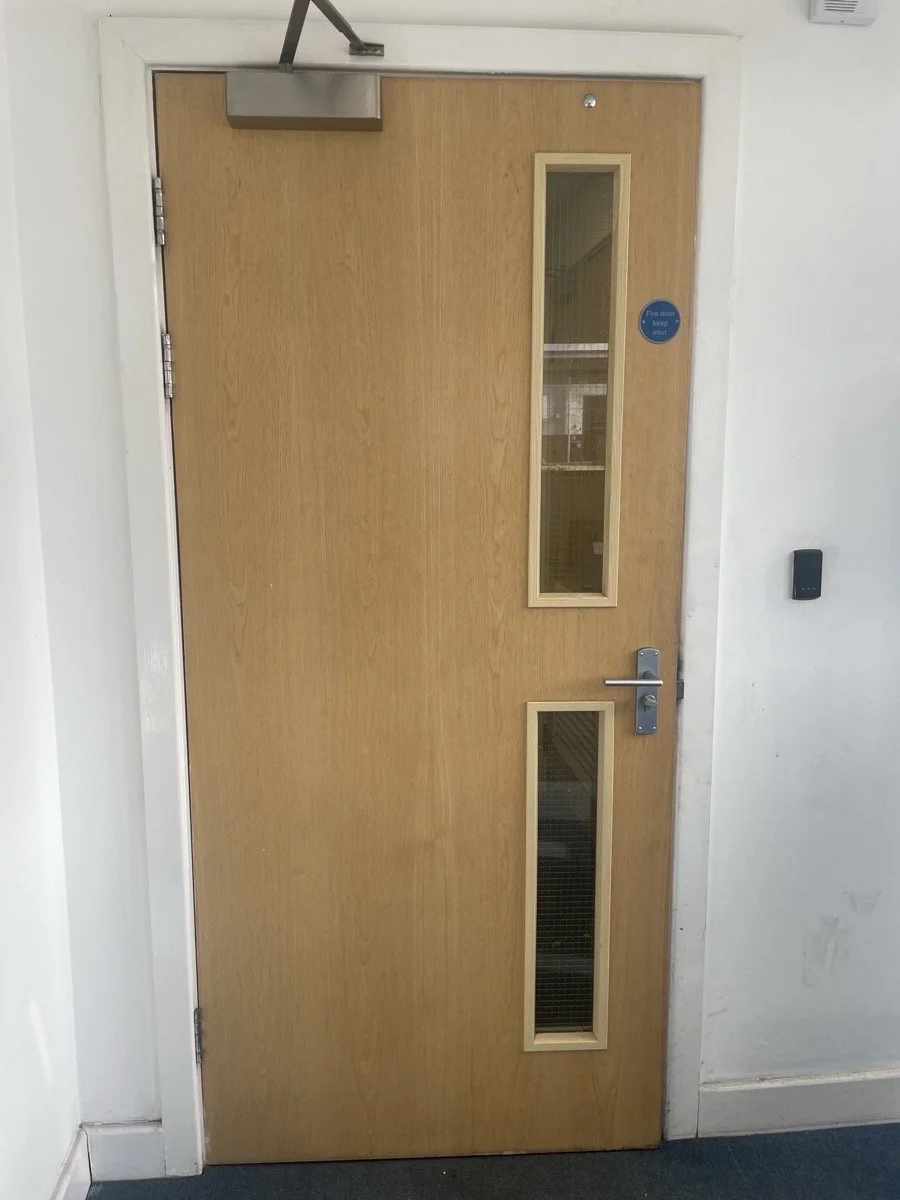When is a fire door not a fire door? When you leave it open..
Fire door safety week (23rd-27th September) aims to raise awareness of the regulations and importance of inspecting fire doors. This years campaign focuses on educating people on the basics of fire door safety including their component parts.
Fire doors may be part of a buildings ‘passive’ fire protection system but they are often the first line of defence in terms of fire safety. Here are 5 areas to inspect when determining if a fire door is fir for purpose;
Certification. All fire doors should have a certification mark at the top (or side) of the door, from an approved fire testing centre. Without one, it cannot be confirmed if the door is fire-safe.
Gaps. Excessive gaps were one of the most common reasons for fire doors failing inspections. Check that gaps around the top and sides of the door are less than 4mm and the bottom is up to 5mm when closed. This is to prevent smoke travelling through the cracks.
Seals. Fire doors or frames have intumescent seals which expand in contact with heat, stopping flames (and sometimes, smoke) from flowing through the cracks. Make sure fire door seals meet regulations, are fully intact, and show no signs of damage.
Hinges. Three or more hinges should be firmly fixed to the door and frame, with all screws intact and working. Due to the weight and purpose of a fire door, hinges should be CE-marked and manufactured to extremely high standards.
Closing. A fire door should close properly and securely around all parts of the frame and floor, without sticking. It should never be propped open – a fire door only works when it’s closed. For residents, hotel guests, and other building occupants who may be unaware about the role fire doors play in saving lives and properties, fire door signs are important for informing those on the premises to keep fire doors closed and surroundings clear.

